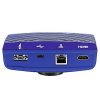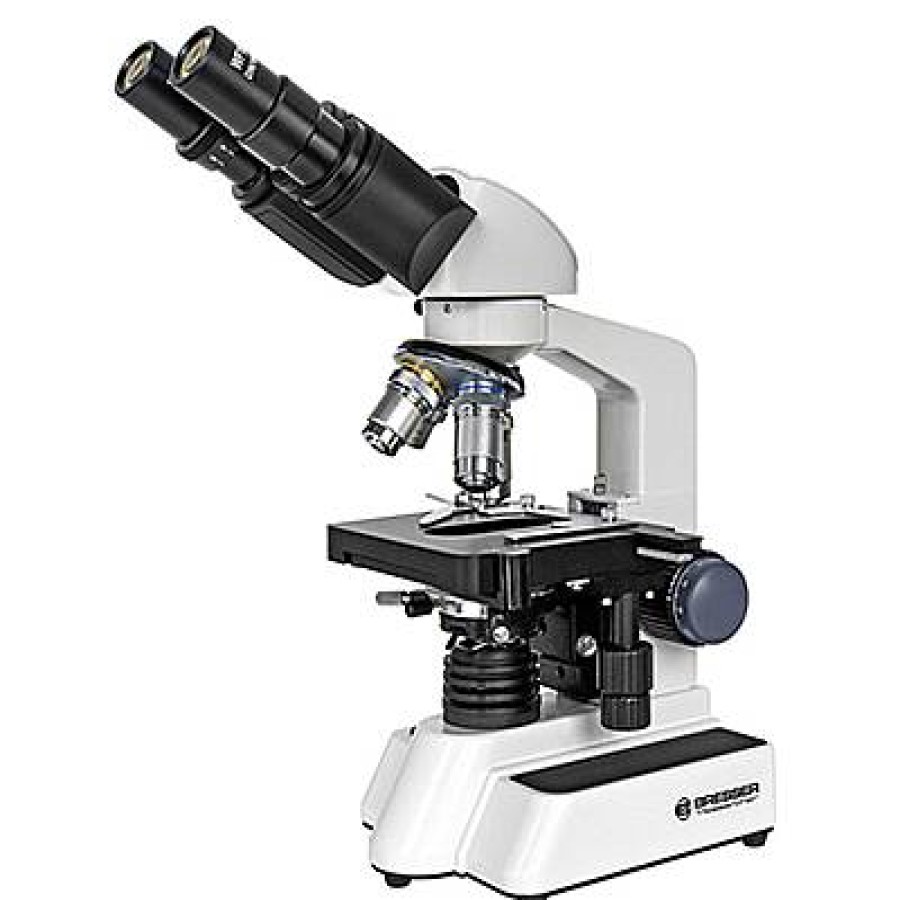Bresser Bresser Biolux Nv 20-1280X Microscope | Microscopes
£144.00 £78.44
Bresser Bresser Biolux Nv 20-1280X Microscope | Microscopes

Designed Specifically For Beginners And Students, The Bresser Biolux Nv 20-1280X Microscope Comes With A Hd Microscopic Camera. Featuring 3 Objectives And 2 Interchangeable Wide Field Eyepieces, The Microscope Offers A Magnification Range Of 20X To 1280X. The Built-In Mechanical Desk Ensures Precise Placement Of The Samples And Is Powered By 3 Aa Batteries.
Bresser Biolux Nv 20-1280X Microscope Key Features:
- Features 3 Objectives And 2 Interchangeable Wide Field Eyepieces
- Provides A Magnification Range Of 2X To 1280X
- Barlow Zoom System Offers A Magnification That Can Be Varied By A Factor Of 2
- Built-In Mechanical Desk Ensures Precise Placement Of The Samples
- Dimmable Led And Transmitted Light Creates Ideal Illumination For Samples
- Includes A Hd Camera To Capture Images And Videos Of The Samples
- Can Easily Be Powered By 3 Aa Batteries
- Can Easily Be Powered By 3 Aa Batteries
- Electronic Eyepieces Offer A Hd Resolution Of 1280X720 Pixels
- Compatible With Windows 7/8/10 Operating Systems
- Metal And Plastic Construction Makes The Microscope Lightweight But Sturdy
- Can Be Used To Document Interesting Observations Of Samples
What’S In The Box?
- 1 X Bresser Biolux Nv 20-1280X Microscope
- 1 X Mechanical Desk
- 1 X Hd Camera With Metal Housing
- 2 X Eyepieces (5X And 16X)
- 3 X Objectives (4X, 10, And 40X)
- 1 X Barlow Lens
- 1 X Mechanical Cross Table
- 5 X Prepared Slides
- 5 X Blank Slides
- 3 X Aa Batteries
Faqs:
What Are The System Requirements For The Microscope?
The Bresser Biolux Nv Microscope Includes A Hd Camera So That You Can Document And Share Your Observations On A Pc Using The Usb 2.0 Port. It Is Compatible With Windows 7/8/10 Operating Systems. The System Requirements Are 1Gb Ram, 2Ghz Processor, Cd Or Dvd Drive, And A Usb 2.0 Port.
What Kind Of Lighting Is Available?
There Are Two Lighting Units In The Microscope Where Three Types Of Lighting Can Be Achieved. If The Switch Is Set To “Ii”, The Specimen Will Be Lighted From Above (Reflected Light) And If The Switch Is Set To “I”, The Specimen Will Be Lighted From Below (Direct Light). The Setting “Iii” Is Used To Light The Specimen From Both The Transmitted And Direct Light. It Is Recommended To Use The Transmitted Light Unit To View Transparent Specimens And The Direct Light Unit For Non-Transparent Specimens.
What Is The Colour Filter Disc Used For?
There Is A Colour Filter Disc Under The Microscope Table That Aids In Viewing Very Bright And Transparent Objects. Simply Select The Right Colour For The Specimen To Better Recognize The Components Of Colourless Or Transparent Objects.
Be the first to review “Bresser Bresser Biolux Nv 20-1280X Microscope | Microscopes” Cancel reply
Related products
Eyepiece Accessories & Filters
Sky-Watcher Sky-Watcher 2 Inch 90 Degree Star Diagonal | Eyepiece Accessories & Filters
Microscopes
National Geographic National Geographic 40-1280X Microscope + Phone Adpter | Microscopes
Eyepiece Accessories & Filters
Sky-Watcher Sky-Watcher 45 Degree Erecting Prism | Eyepiece Accessories & Filters





















Reviews
There are no reviews yet.